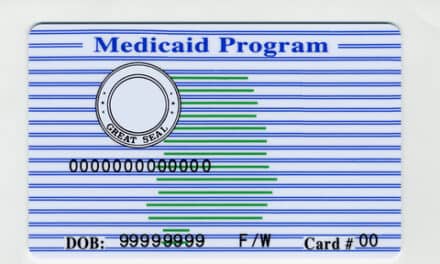by John Sparaga, DMD
How to get the anchorage necessary to treat your most challenging cases
 |
| John Sparaga, DMD |
In my 30 years in orthodontics, there have been many tremendous advancements in braces technology, including cements, radiography, photography, and metallurgy. Five years ago I decided to give up full fixed braces to concentrate on Invisalign treatments full-time. I did this because the vast majority of my teen and adult orthodontic patients would rather wear clear aligners than braces.
The Invisalign orthodontic appliance system has been an excellent product for my patients because it offers several desirable advantages over braces: increased comfort, durability, hygiene, and aesthetics. But a negative with Invisalign is that it also lacks the solid, “glued-on” control that fixed appliances provide. This is painfully obvious to a fixed-appliance orthodontist who is used to having archwires exert their influence continually, with metal fatigue and breakage the only considerations. Nonetheless, clear aligners are the treatment of choice for all of my patients, as long as they can get the job done. Getting the job done, though, frequently requires an anchor point from which to push or pull, whether in braces or clear aligners.
The Pursuit of Anchorage
When it comes down to it, anchorage is what orthodontics is about; most of our orthodontic endeavors have been based upon anchorage because it provides the most stable place from which to apply skeletal and dental forces through orthodontics. This has included extraoral and intraoral devices such as cervical and hi-pull headgears, J-hook facebows, dental tip-back bends and interarch springs, and elastic or fixed propulsion devices. Given that most of these approaches require extensive patient cooperation, our results were frequently compromised.
On simpler cases that don’t require much anchorage, I have found that Invisalign treatment is a delight for my patients. However, more challenging cases require more anchorage than Invisalign provides. I felt that if we could improve our anchorage during aligner treatment, we could address the more difficult cases, such as four-bicuspid extractions, orthognathic surgical cases, and Class II cases. But this was going to present a new learning curve that would require more than part-time involvement on our part. So, over a 3-year period, we phased out full fixed-braces cases and have been offering the Invisalign treatment plan to 100% of patients who have presented here since. In our 600 cases treated so far, we have learned a lot. And we are still learning.
Since our Korean colleagues brought mini-implants to our shores about 7 years ago, our specialty has been enjoying real anchorage, not the temporary kind that you get with headgear or facemasks. Since our office is now devoted to “clear smiles” treatments, I began to think about how we might attach mini-implants to Invisalign aligners, to allow the appliance to exert its influence while maintaining its relative position within the patient’s facial structure. After all, an aligner is a fairly solid, one-piece base that unifies the dental arch while exerting gradual forces to individual teeth within it.
 |
 |
| Incisal intrusion combined with maximum torque. | Upper bicuspid extraction and lower incisor intrusion. |
The Introduction of TADs
Intrusion of upper and lower incisors has been a problem for our aligner patients, since the flexibility and gentleness of the Invisalign appliance allows the posterior grip on molars and bicuspids to slip somewhat, regardless of the newest bevelled attachments we impose on them. This is simply because aligners do not have the “grip” on individual teeth we were used to with traditional wire-and-bracket braces. In our 10 years of working with Invisalign, we have experimented with and found which types of attachments, hooks, and bumps work best for us with aligners. Then we began using hooks built into aligners with which to attach elastic force modules (rubber bands) from the aligners to temporary anchorage devices (TADs).
 |
| Sparaga during TAD training (see sidebar for more information). |
There are as many different uses for TAD anchorage combined with Invisalign treatments as there are with conventional braces. Think of it as a single appliance, flexible yet firm, that can be “instructed” to apply pressure to any or all of the teeth in the arch, at the discretion of the orthodontist. All of this is established, reviewed, and adjusted on the computerized Invisalign ClinCheck treatment plan, well in advance. Yes, it takes a shift in mechanical and even philosophical thinking.
By placing a TAD between lateral incisors and cuspids on the lower arch, for instance, we create a purchase point from which to pull vertically on the aligner, enhancing both the intrusive and torquing effect built into the aligner. This eliminates the need for posterior attachments, since bony anchorage is far more stable than dental anchorage. We can also place TADs in the upper posterior regions, to serve as an anchor to the upper aligner, while we retract incisors in a bicuspid extraction case.
In severe Division 2 cases, upper vertical TAD traction will also amplify the torquing effect of the aligner, which is critical to the success of relieving the Class II interarch component of force from the incisor-inclined plane upon closure. How many times do you recall the spontaneous AP correction of some degree of Class II mandibular positioning as soon as incisal entrapment was relieved?
There are situations in which we might want to apply different fixed-type appliances, like molar distalizers, prior to actual Invisalign application, Using TAD anchorage in palatal or infrazygomatic anatomical positions can provide stabilization for the aligners after posterior distalization, and can also retract anterior teeth in Class II correction cases. They can also help the intrusion of the posterior occlusal plane in open-bite cases.
No matter where they are applied or during which phase of treatment, TADs are now a well-recognized anchorage tool that allows us a myriad of new ways to apply stable, intraoral orthodontic force, 24 hours per day. We are seeing tremendous success in treating cases that we previously found to be most difficult—such as closing anterior open bites—all because of posterior TAD vertical traction.
Innovative new applications for TADs with braces are appearing monthly in dental journals, causing a lot of excitement for our specialty, but the frontier of applying TAD force to Invisalign is still a new one. We find that our patients share our excitement as we develop effective new orthodontic methods to help them with their more complex needs.
 |
 |
| Maximum anterior retraction. | Infrazygomatic maxillary anchorage. |
Expanding the Horizons of Patient Care
Some orthodontists worry that Invisalign has made it too easy for general dentists to integrate orthodontics into their practices, thereby increasing the competition for patients—especially in confined, smaller populations. This is similar to the consensus of our specialty when straight-wire appliances came out decades ago. While true to some degree, the more difficult cases to be treated with Invisalign still require skill and expertise that only the orthodontic specialist has; most general practitioners are happy to refer cases to us when they require this level of knowledge. TADs coupled with aligners provide a new avenue to which we can apply our orthodontic knowledge and training. Just as straightwire didn’t devastate the orthodontic world through competition, neither will Invisalign, especially now that TADs are on the scene.
The use of true skeletal anchorage during clear-aligner therapy removes one more major obstacle to universal specialist acceptance of this relatively new treatment modality. Our specialty is slow to change, true, but its intent is focused on patient benefit. What greater technical challenge can we now face within our practices? What greater stimulation can we provide to improve care and enhance our patients’ health and well-being?
|
To read more on this subject, search for “” or “” in our archives. |
We have only one chance in our professional lives to give our best to our patients. My personal view is that Invisalign and TADs will take us where we haven’t gone before in orthodontics. Easy? No. But stimulating and rewarding? Absolutely. While many believe we entered the “Golden Age of Orthodontics” many years ago, I personally believe that the Golden Age is actually today. And part of that is due to Invisalign with TADs—which may well become the new orthodontic standard of care.
Getting TAD Training
Needless to say, there is a fair amount of training that goes into the proper use of TADs, and there are a myriad of companies producing TADs that offer courses. Of the three I have taken, ELITE training by Jack Fisher, DMD, of Memphis, Tenn, was the most thorough, scientific, and stimulating.
I had taken two full-day TAD courses before I took Fisher’s. His course was the best researched, and was full of plain old common sense. And the line of TADs he designed and markets is state of the art. I was most impressed with Fisher’s TAD engineering and approach.
Perhaps more outstanding, however, is the hands-on cadaver training that ELITE provides at a medical facility in Memphis. Attendees spend 2 days studying anatomy in the classroom and applying innumerable TADs into (fresh) cadaver heads. This allows you to make mistakes—and all mistakes are encouraged and allowable. I can’t imagine a better way to gain the confidence needed to professionally present and deliver TADs to your patients.
For more information on ELITE Training, call him at (901) 730-1448.
John Sparaga, DMD, is in private practice in Anchorage, Alaska. He is a Diplomate of the American Board of Orthodontics, and his practice, Clear Smiles Alaska, was recently named one of the “Top 100 Invisalign Practices” in the world. He can be reached at





